House of the Sun
Multi-channel installation (6 screens), sound, lighting, fabric, metal rods, slide projectors, acrylic glass, photographic filters, motors, glass photographic plates
2020
Multi-channel installation
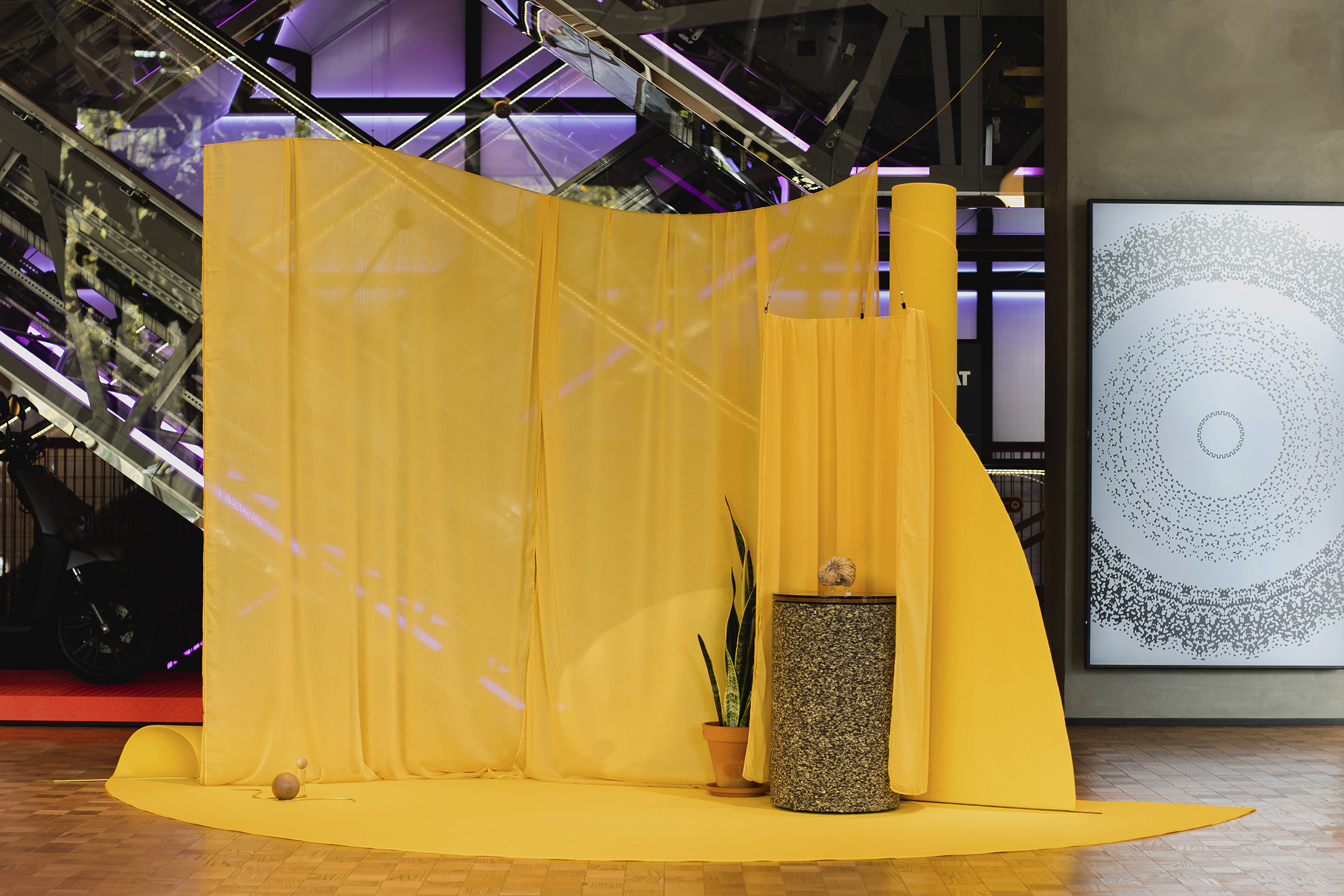












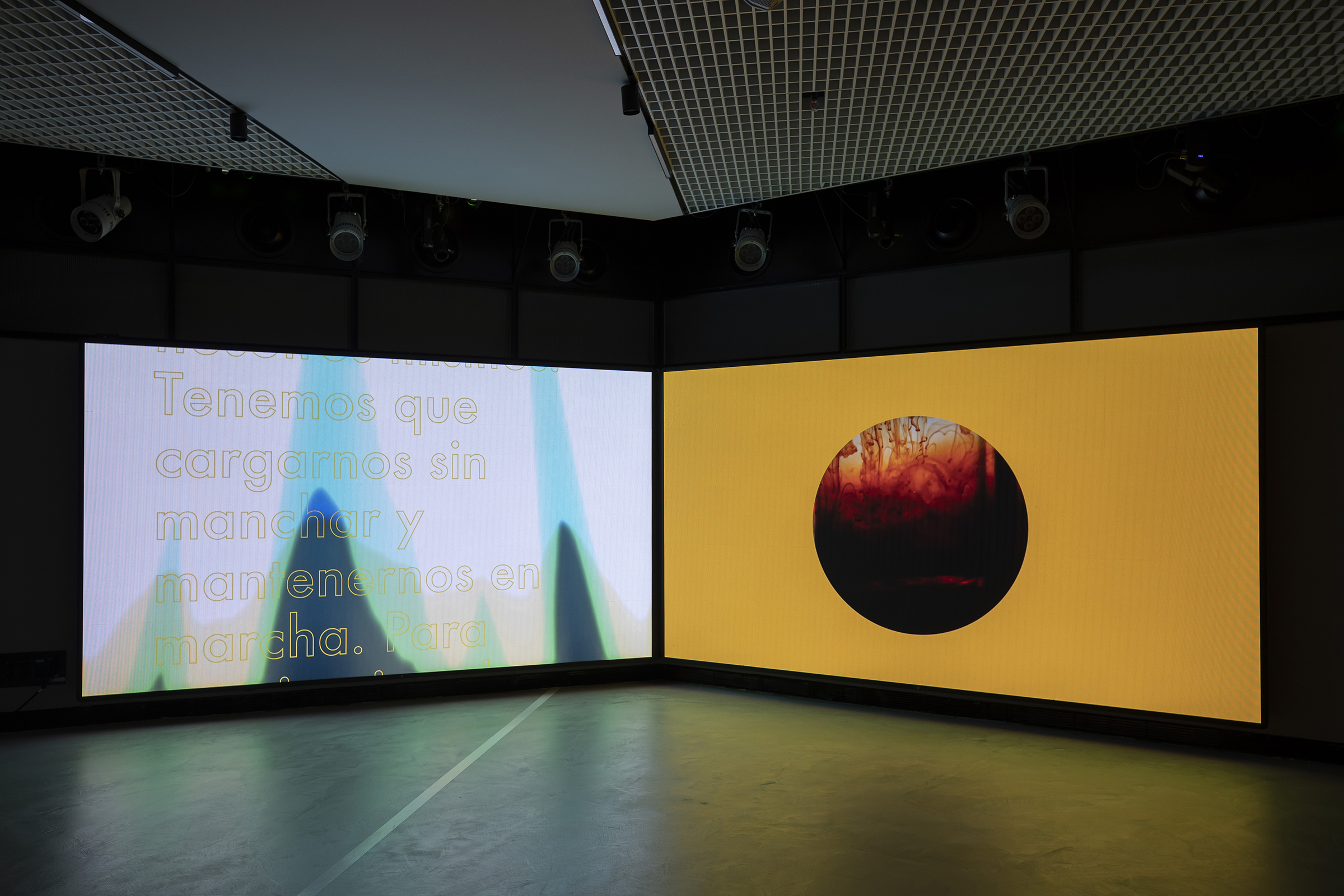
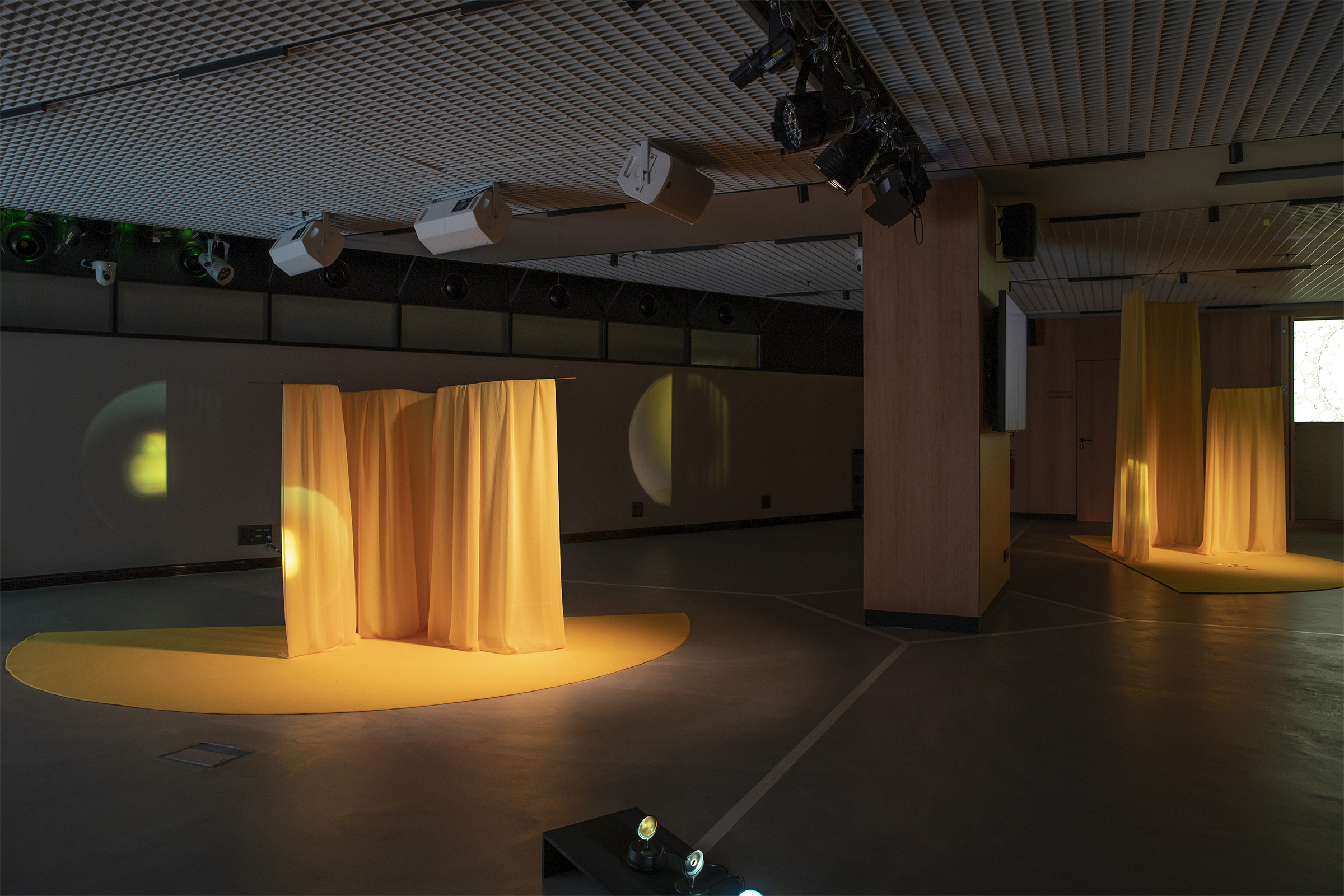
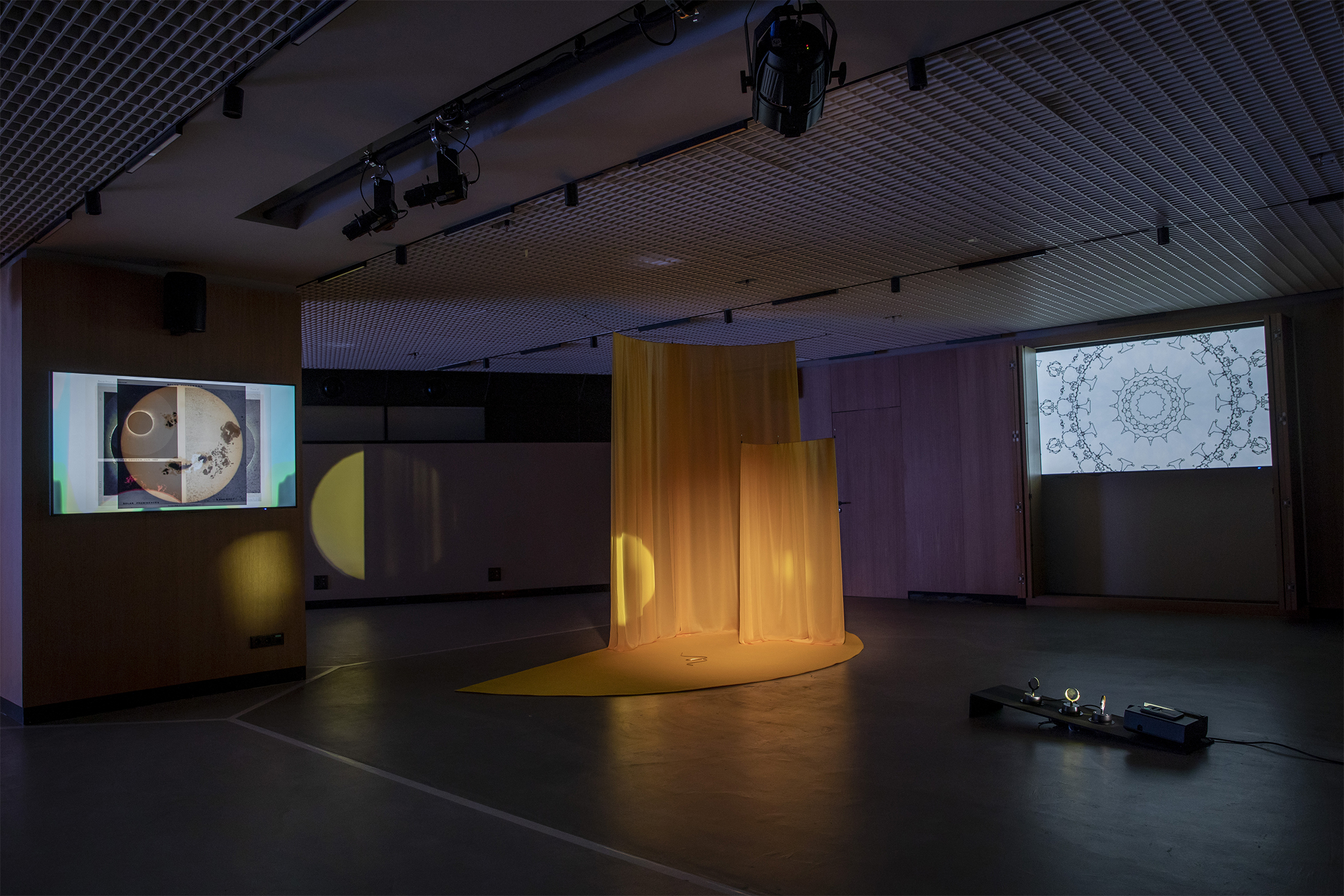



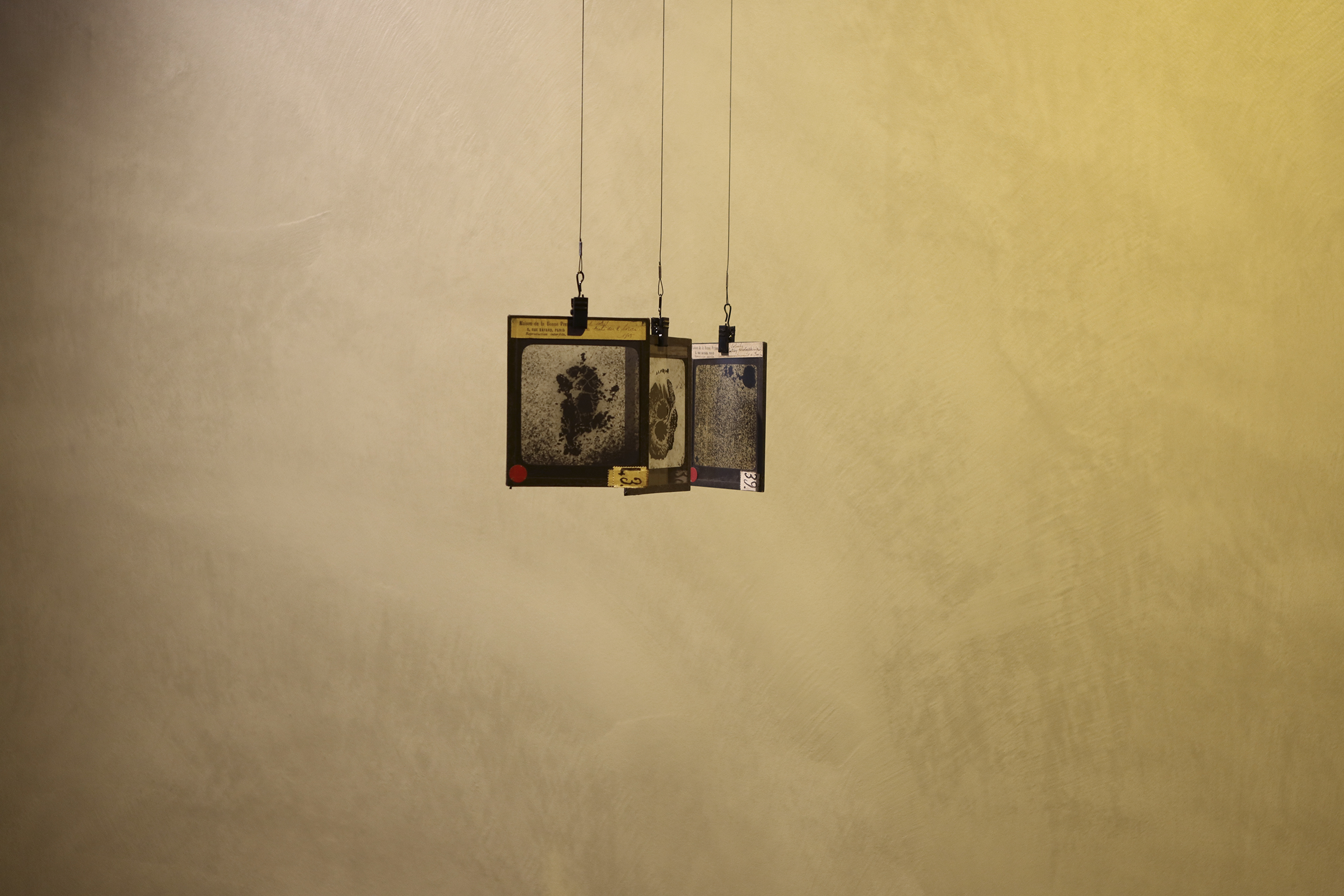














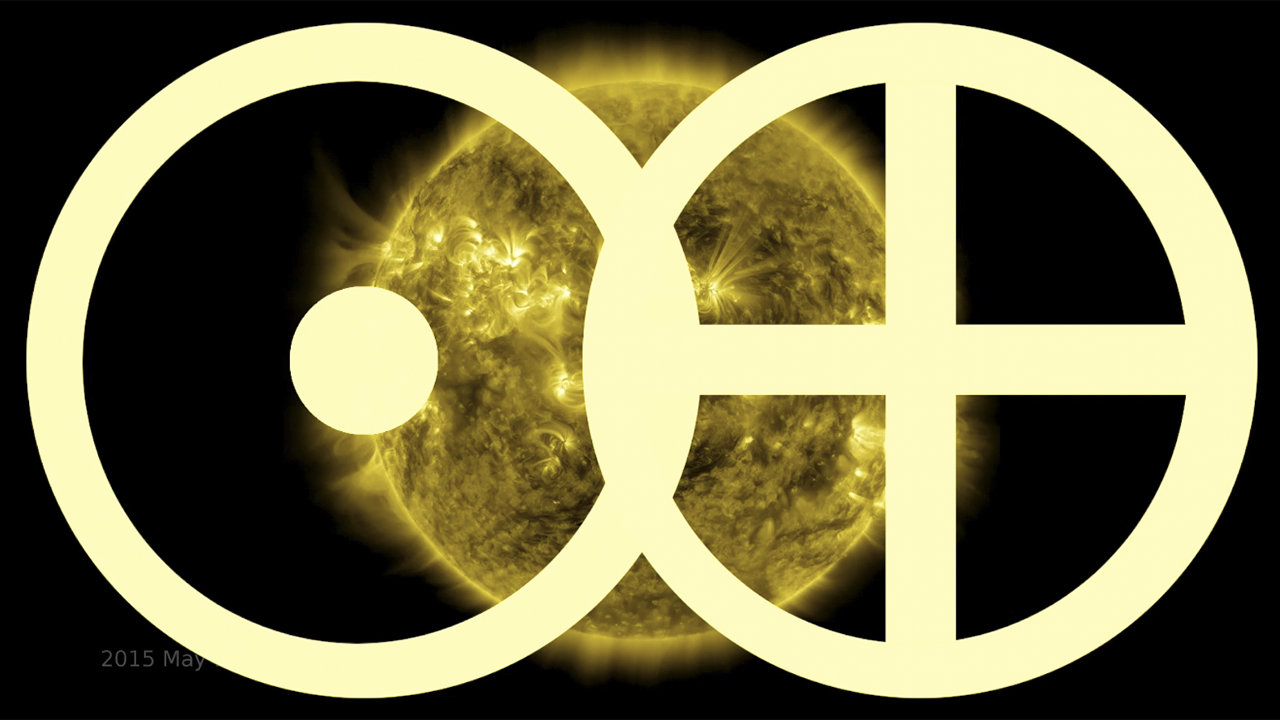


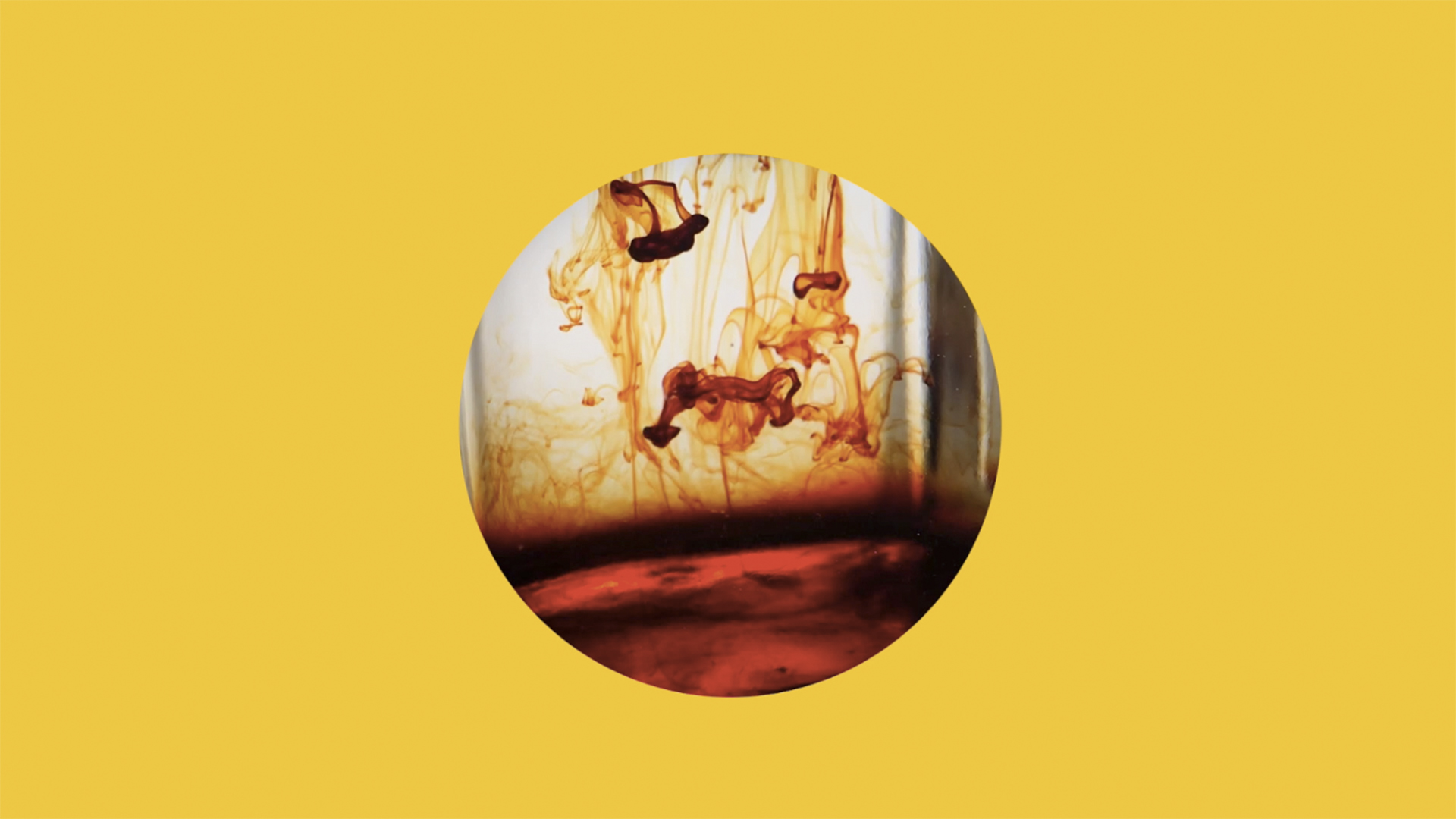

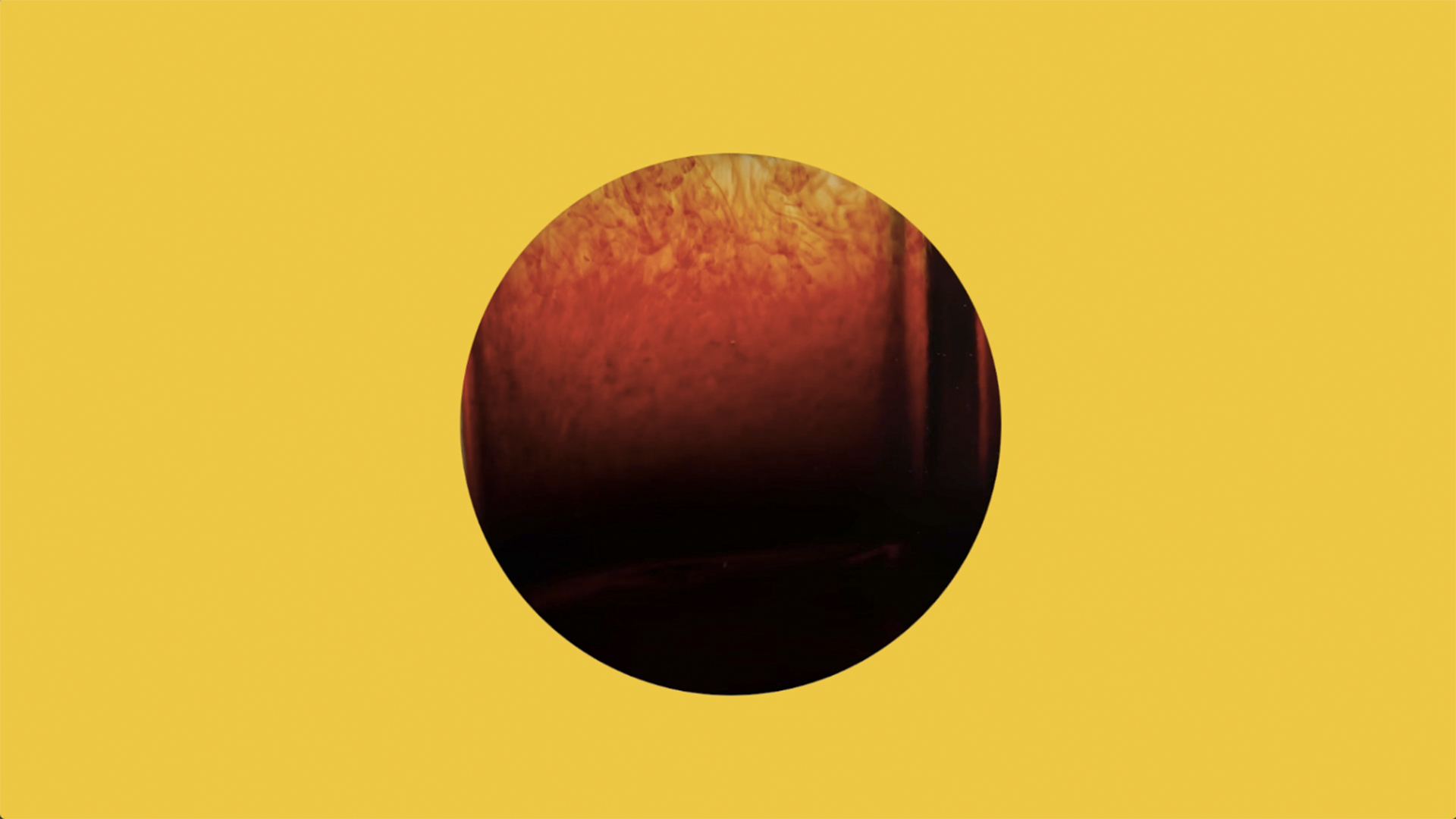




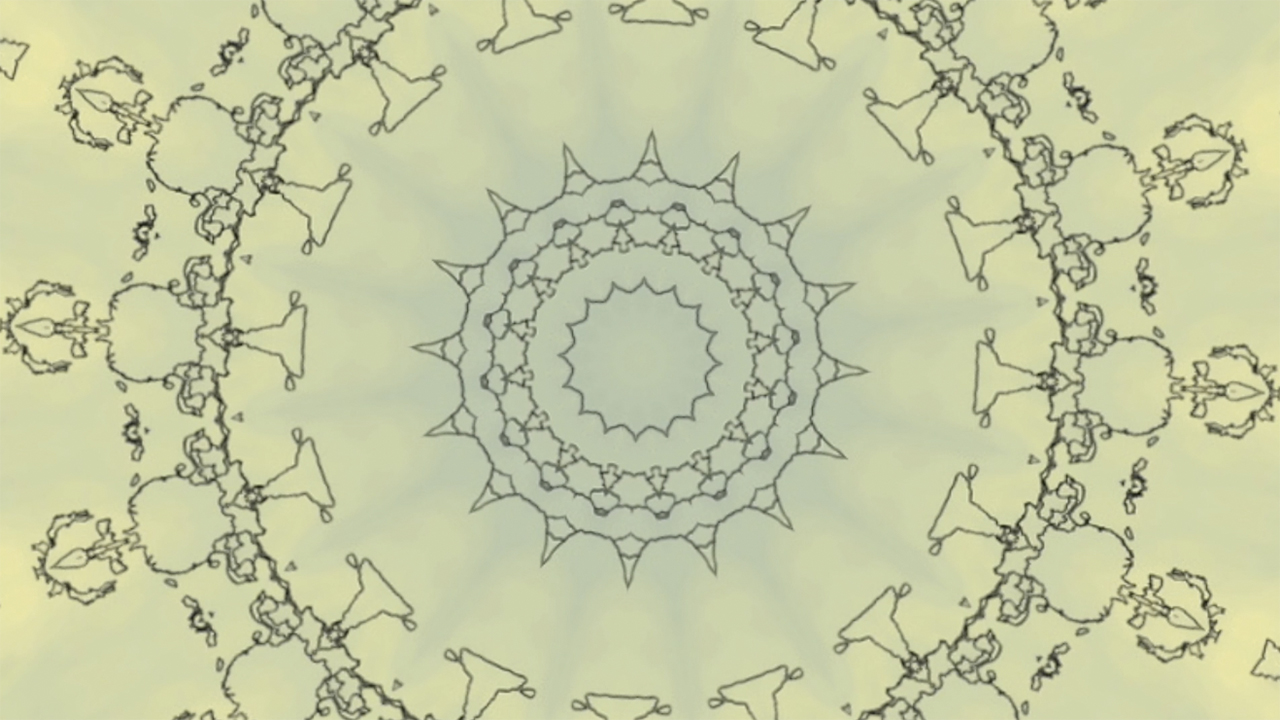

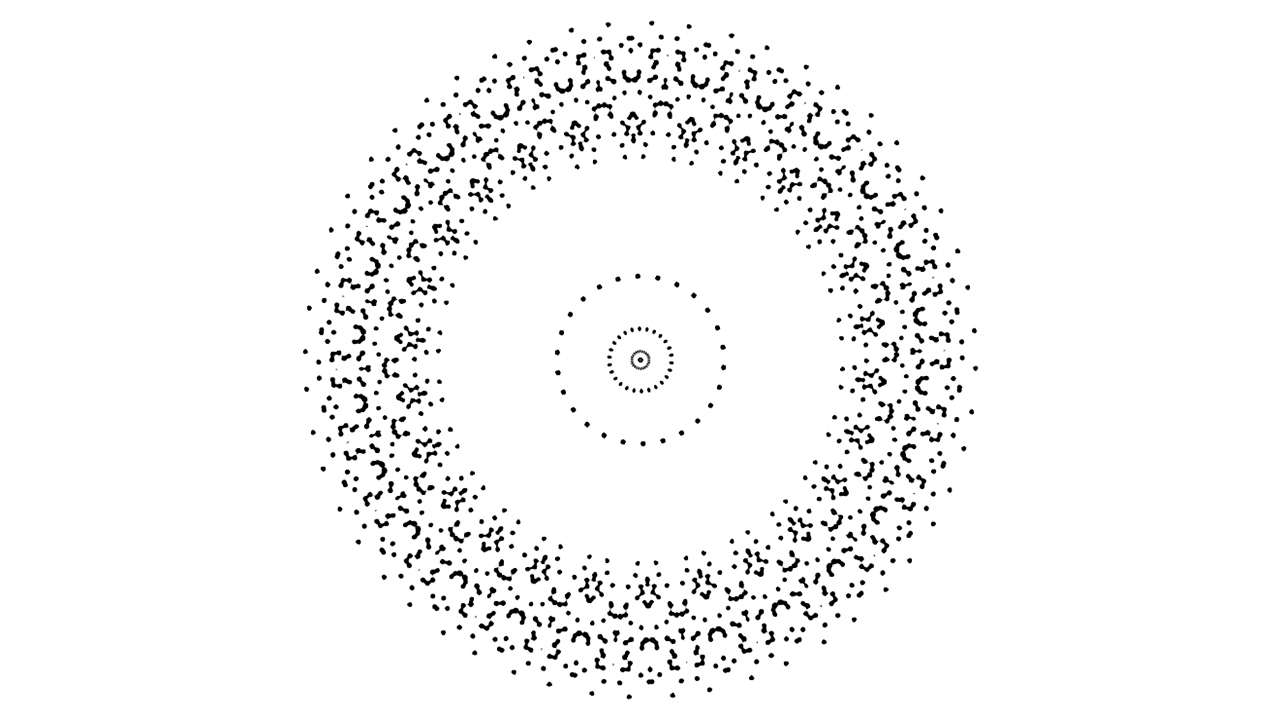


House of the Sun is a site-specific project that inhabits Casa Seat, especially the auditorium at lower level with a multi-channel installation. Blurring the disciplinary borders between video, sculpture and installation, the project proposes a sonic and luminous journey through the building. House of the Sun reflects on our relationship with the Sun, addressing concepts such as distance, movement and time cycles. Through the exploration of our connection with the Sun, we are led to reflect on the past, present and future–focusing particularly on questions of sustainability and survival. We experience this relationship through sight; though we need the Sun to see, we risk being blinded and burned by it.
In the entrance hall, the viewer will find a large installation built from suspended yellow fabrics accompanied by many objects, including photographs displayed through a slide projector. One of the fabrics’ shape is reminiscent of a halved-analema, a curved line that astronomers use to read the Sun’s position in the sky observed throughout the year from the same place and at the same time. This image represents our relationship with the Sun, earth’s orbit around it, and the passage of time. The hanging fabrics evoke everyday home curtains; a simple tool that mediates our intimate relationship with sunlight. Considering houses as some of the least consuming spatial units, sustainability is inherently connected to our privacy and to our relationship with light. A plant is also present as part of the installation. As living organisms, plants’ intelligence functions on timescales that exceed humans’. Plants have a much more balanced and sustainable relationship with environmental resources, especially with sunlight on which they depend on and through which they are able to support our existence.
On the vertical screen next to the installation, there is a graphic animation derived from a video that displays the data of CO2 emissions produced by fossil fuels globally. In the 1800’s, one ton of gas was emitted per second. In the 1850’s, about six tons of gas were produced per second. Fifty years later, this value was multiplied by ten. In the 1950’s, 187 tons were being produced per second and by the 2000s, we had surpassed 750 tons–mostly due to fossil fuel burning. At this rate, we are quickly approaching CO2 levels of 15 million years ago, when temperatures were four degrees Celsius warmer than today, and the sea level was twenty meters higher.
Video from the CO2 emissions data
Entering the auditorium, we see a series of videos that unfold through the space. They are accompanied by harmonious configurations of yellow fabrics, creating visual games between projected lights and photographic filters. The beams of light emitted from the projectors create the illusion of small Suns scattered around the room while the photographic filters evoke a solar system in motion.
One of the first videos in the auditorium shows a ten-year time-lapse of the Sun's activity recorded by NASA's Solar Dynamics Observatory. The solar cycle lasts approximately eleven years, a period during which the North and South magnetic poles change position. This change generates intense activity on the Sun’s surface, including sunspots caused by magnetic fields. The number of spots is quite small at the beginning of the cycle; but the quantity increases as time goes by, reaching a peak in the middle of the cycle. Giant solar eruptions also expand as the cycle progresses. The eruptions release an enormous amount of energy and material into space, causing auroras on Earth and even affecting our communications. NASA’s video also shows superimposed images of the astrological symbols of the Sun and the Earth, proposing two different interpretations to our relationship with the cosmos: one being scientific observation and another the subjective interpretation of astrological influences in our daily lives.
Time-lapse video from the Sun Dynamics Observatory, NASA (excerpt of 30min; full video 58min)
In another video, a variety of images show sunspots, eruptions, eclipses and the stellar corona, referencing images from a scientific past that lacked complex imaging devices. On another screen, a series of data takes the form of abstract configurations: a video shows a map of global warming from 1884 to 2019, in which colors represent the rise of temperatures, starting from a light blue and intensifying to the color red in more recent decades. Another video displays the amount of CO2 released into the atmosphere from 2002 to 2016. The same change in the color pattern occurs in both videos due to recent increase in gas emissions. The visual effect is an aestheticization of the data, which produces a fascinating detachment from reality.
Video with images related to the sun
Video from the global warming map
Video with the text
In the back of the room, a text-based video illustrates many of the concepts underlying this project. It creates a connective narrative between the pieces, weaving together stories about distance, vision, fossils and time. To its side Sunset, a video that was originally conceived independently of this installation completes the multi-channel vision.
Sunset
When the existence of life in other parts of the universe is scientifically investigated (and hypothetically imagined), some of the essential factors to be considered is the presence of photons and the duality between light and darkness. Because of the particular way in which the earth orbits and rotates around the Sun, we witness phenomenons like the sunset. Dusk is a magical and often exciting moment, in which time becomes imperative as we observe the transition from day to night. It usually results in highly colored landscapes, which humans find aesthetically attractive and to which they attatch great symbolic meaning. During times of spatial confinement, we are forced to search in our closest reality for a way to supply the lack of horizon and of landscape. Sunsetarises from this search; from these reflections on the Sun, on time, on our relationship to the universe. It proposes a leisurely look at the everyday and the crucial moments that derive from the contemplation of simple things. Taken in a single shot, the video shows the fascinating movement of a few drops of iodine falling into a glass bottle filled with water, leaving filaments and shapes that gradually settle to the bottom of the container. These explosions and bulges are reminiscent of the activities that occur on the solar surface. Little by little, the water transforms into various shades, and while this artificial sunset takes place, the device is revealed: nothing more than a container of water in a home environment. The disintegration of the color yellow begins at 8 minutes and 19 seconds, the same time it takes for the light from the Sun to reach the Earth.
The House of the Sun course ends on the first floor, with a small installation of vintage photographic plates displayed on rotation. The glass plates are meant to function as a type of fossil, by showing images of sunspots, they are objects from the past that record our evolution.
Installation with glass photographic plates
Our relationship with the Sun is fundamental and exists in a delicate balance. Its presence gives us life and vision, and through this vision, it gives us understanding of life itself. The presence of the Sun is the reason why we can understand ourselves as beings in the universe. It is also the reason why we have been able to inhabit an area with optimal conditions for the rise of life. House of the Sun seeks to create questions around our deep relationship with the Sun, in the present, and in the future.
Casa Seat, LOOP Barcelona 2020